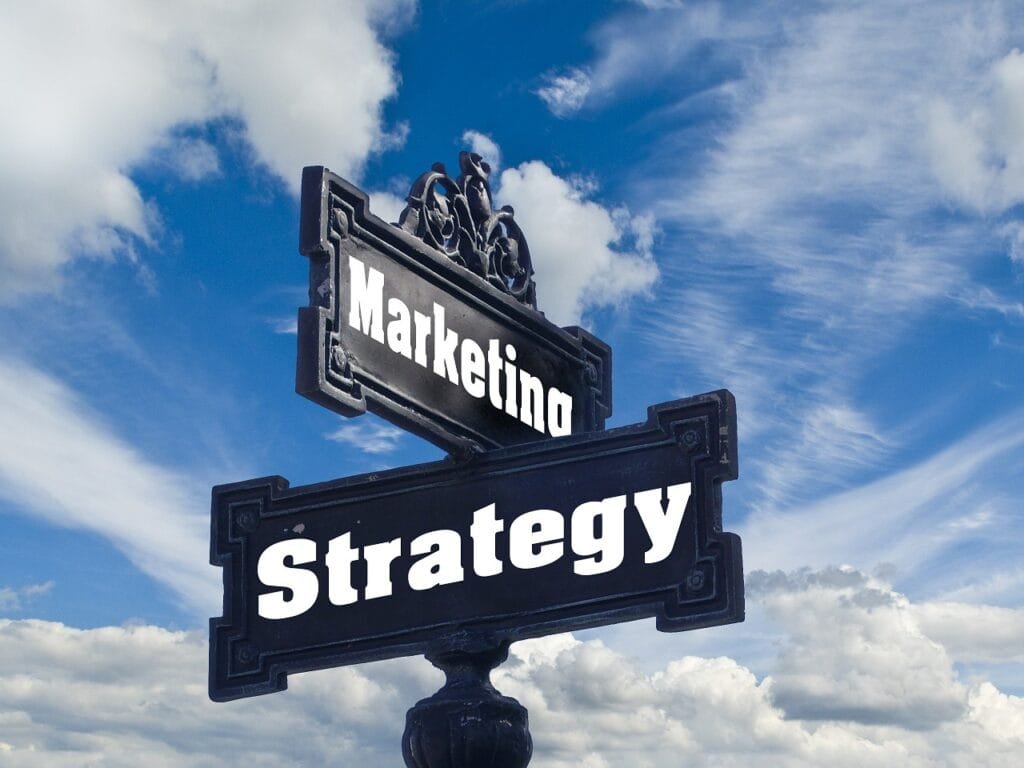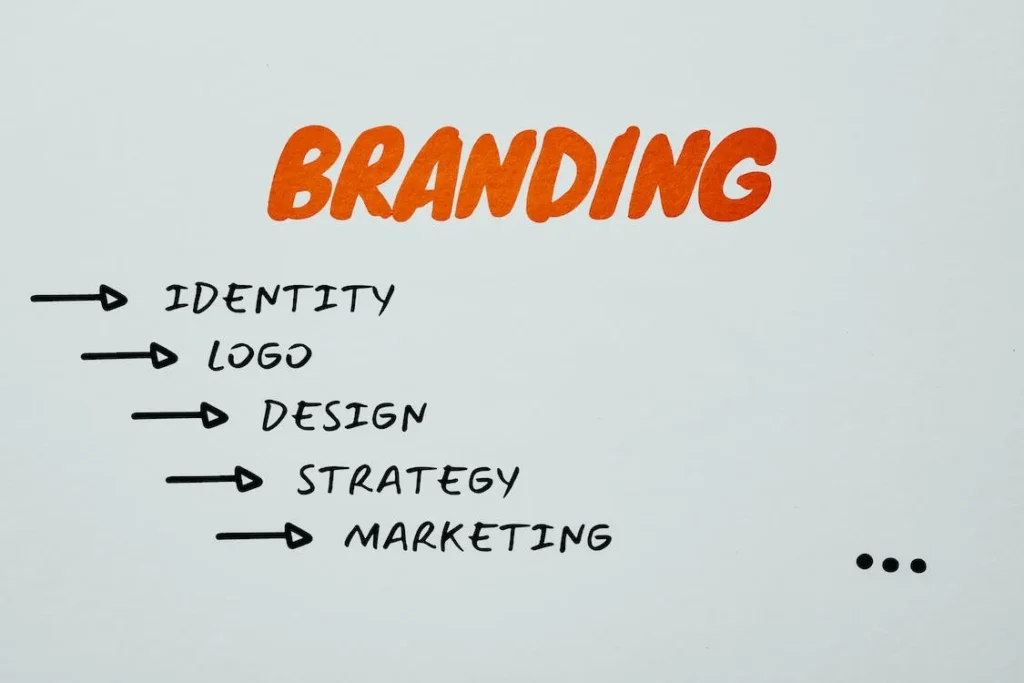This Article has been revised, edited and added to, by Poulomi Chakraborty.
- Related: Check out our free SEO suite
- The Origin – Crafting A Legacy
- The Aviator – The Beginning of An Era
- The Evolution – Adapting to Change
- The Wayfarer Revolution
- The Diversification – Expanding the Horizon
- The Digital Leap – Embracing the New Age
- Sustainability and Ethics – A Modern Approach
- Technology Integration
- Customer Engagement – The Heart of Branding
Ray-Ban – a brand that instantly conjures images of classic, timeless eyewear. It’s a brand synonymous with style, quality, and sophistication, cutting across generations and making a significant mark in the fashion industry. But what exactly catapults a brand into such an iconic status, and how has Ray-Ban managed to not just maintain but elevate its presence over the years? In this comprehensive dive, we will unravel the branding mysteries that have propelled Ray-Ban into its legendary status.
The Origin – Crafting A Legacy

Founded in 1937, Ray-Ban was birthed from a functional need – to combat the blinding glares pilots faced in the skies. It’s here, in the clouds, that the classic Aviator sunglasses, with their distinctive shape and lens technology, first soared into popularity. But Ray-Ban didn’t just stop at solving a problem; they capitalized on an opportunity, merging functionality with style.
Strategic Brand Foundations: Seizing Opportunities from Everyday Challenges
The story of Ray-Ban’s origin offers more than just a historical recount; it serves as a profound lesson in seizing opportunities from everyday challenges. As a startup founder, the initial phase of your journey might not be marked by groundbreaking innovations but rather by identifying and addressing the everyday pain points of your target audience.
Ray-Ban began by solving a practical problem faced by pilots—glare in the skies—which later became the cornerstone of their global brand identity. Similarly, by focusing on real-world problems and crafting solutions that blend utility with desirability, your startup can lay down a foundation as strong as that of Ray-Ban.
Cultivating Brand Identity Through Narrative and Mythology
In crafting its legacy, Ray-Ban didn’t just create products; it crafted a compelling narrative that resonated across generations. The brand mythology of Ray-Ban—being the first to create sunglasses for pilots—imbued its products with an aura of authenticity and exclusivity.
For startup founders, the takeaway is clear: weave your brand’s origins and product development into a narrative that speaks to the aspirations and emotions of your audience. By embedding your brand’s roots in a story that aligns with your audience’s identity or aspirations, you can elevate your product from a mere item to a symbol of a larger experience or value.
Leveraging Legacy While Innovating
One of Ray-Ban’s key strategies was leveraging its rich history of innovation while continually adapting to current trends and technologies. This balance between heritage and innovation is crucial for startups aiming to establish a lasting brand. It’s not enough to rest on the laurels of initial successes; continual adaptation and innovation are necessary to stay relevant in a rapidly changing market.
Consider how your startup can use its initial achievements as a platform for further development. Can your original solution be adapted or expanded to meet new market demands or to enter new markets?
Building a Brand That Stands the Test of Time
Ray-Ban’s journey from functional eyewear to a symbolic lifestyle accessory highlights the importance of building a brand that stands the test of time. For startups, this means looking beyond immediate gains and focusing on long-term brand equity.
Consider how each decision affects your brand’s reputation and equity. Prioritize quality and customer satisfaction to ensure that every product or service strengthens your brand’s position in the market.
Lessons from Ray-Ban’s Legacy for Startups
Ray-Ban’s origin story isn’t just a tale of a product meeting a need; it’s a masterclass in strategic branding, narrative building, and the evolution of a legacy. As a startup founder, understanding and applying these principles can help you not only meet the immediate needs of your market but also build a lasting brand that resonates deeply with your consumers. Start with a clear, relatable problem, embed your solution within a compelling story, and continually adapt to sustain your brand’s relevance and appeal through the years.
The Aviator – The Beginning of An Era

The Aviator wasn’t just a pair of sunglasses; it was a statement. It reflected a daring, adventurous spirit, something that appealed not just to the pilots but a broader audience. This universal appeal emanated from impeccable design coupled with unmatched quality, traits that would sew the seeds of brand loyalty among customers.
Unpacking the Design Philosophy
Ray-Ban’s design ethos was simple – create eyewear that shields the eyes while accentuating the style. The thin metal frames, teardrop lenses, and the sleek design were engineered not just to cater to the functional needs of pilots but also to exude a style that was, until then, unprecedented in eyewear fashion.
Quality Above All
Each pair was a testament to superior craftsmanship. Durability, comfort, and style were interwoven seamlessly. Customers didn’t just purchase a pair of sunglasses; they invested in a product that epitomized quality and style, ensuring that each pair was worth every penny.
Harnessing Iconic Design to Shape Market Perception
The introduction of the Aviator was not merely a product launch; it was a strategic maneuver that reshaped market perceptions about sunglasses. From mere functional tools, Ray-Ban transformed them into essential fashion accessories. For startup founders, the lesson here is profound: consider how your product can redefine or create a new niche within your market. Think about how the design and functionality of your product can challenge existing norms and set new standards. Your product’s design should narrate its utility and appeal without a word being spoken, making it instantly recognizable and preferable.
Strategic Brand Positioning Through Storytelling
Ray-Ban’s Aviator didn’t just sell because it was a superior product; it sold because of the story it told and the identity it conferred on its wearers. It spoke of daring, adventure, and style. As a startup, crafting your brand’s story involves more than outlining your product’s features. It’s about connecting those features to the broader aspirations of your customer base. Position your product as a key to unlocking personal potential, adventure, or prestige, much like the Aviator did. Effective storytelling can profoundly impact your product’s reception and endurance in the marketplace.
Creating a Cult Brand: Emotional Engagement and Aspirational Appeal
The emotional and aspirational appeal of the Aviator turned it from a pair of sunglasses into a cultural icon. This transformation was not accidental but the result of deliberate branding strategies that linked Ray-Ban to broader themes of freedom and adventure, which resonated deeply with a wide audience. For startups, tapping into the emotional and aspirational currents of your target audience can catapult a well-designed product into a cult brand. Identify and leverage emotional drivers such as the desire for exclusivity, identity, or belonging to forge a deeper connection with your customers.
Leveraging Cultural Trends for Product Relevance
Ray-Ban’s ability to keep the Aviator relevant through changing times by aligning it with prevailing cultural trends is a strategic masterstroke. They continuously engaged with the zeitgeist, aligning their product with the evolving identity of their audience. Startups must remain agile, adapting their messaging and product development to current cultural and social trends. This does not mean changing your product’s core identity but highlighting different aspects of its relevance in response to the shifting landscape of consumer values and expectations.
Drawing Lessons from the Aviator’s Timeless Appeal
The story of the Aviator is not just about a successful product launch; it is about creating and sustaining a brand that continues to resonate through generations. For startups, replicating this success involves understanding and applying the principles of innovative design, strategic storytelling, emotional engagement, and cultural relevance. By doing so, you can ensure that your brand not only captures the market’s attention but also holds it, evolving into a beloved and iconic brand over time.
The Evolution – Adapting to Change
Ray-Ban could have easily rested on the laurels of the Aviator’s success. But they didn’t. The brand understood the ephemeral nature of fashion and the need for evolution. The release of the Wayfarer in the 1950s marked another milestone, cementing Ray-Ban’s position as a versatile and innovative brand.
Embracing Innovation as a Core Business Strategy
Ray-Ban’s history of evolution is not just about changing styles but about a deep-seated commitment to innovation. This commitment has allowed the brand to remain at the forefront of the eyewear industry. For startups, embedding innovation into the DNA of your company from the outset is crucial. It’s not merely about incremental improvements but about regularly questioning and rethinking your approaches to product development, marketing, and customer engagement to anticipate and lead market trends rather than follow them.
Strategic Pivots: Learning from the Wayfarer Launch
The launch of the Wayfarer is a perfect example of a strategic pivot in product design that met the cultural moment. In the mid-20th century, as America’s cultural landscape shifted towards a more casual, rebellious style, Ray-Ban introduced the Wayfarer, which broke completely from traditional metal frames to bold, plastic designs. This pivot was a risk but one that paid off by aligning the product with the zeitgeist. Startups must remain flexible in their strategies, ready to pivot when original assumptions about the market change. The key is to remain deeply attuned to your customer’s evolving preferences and broader cultural shifts.
Cultivating Agility in Product Development and Marketing
Ray-Ban’s ability to adapt and evolve goes beyond product design; it extends into agile marketing strategies that have enabled the brand to remain relevant across different generations. They have consistently utilized cutting-edge marketing techniques, from celebrity endorsements to immersive digital campaigns, adapting their methods to the current media landscape. For startups, this underscores the importance of agility in both product development and marketing. Developing rapid prototyping capabilities, engaging in continuous market testing, and being ready to shift marketing strategies in response to feedback and new data are all crucial.
Building a Responsive Organizational Culture
Behind Ray-Ban’s ability to adapt and innovate is a responsive organizational culture that encourages creativity and swift decision-making. Creating a company culture that supports risk-taking and values flexibility can help startups navigate the uncertainties of new markets and changing consumer behaviors. Encouraging open communication, fostering cross-departmental collaboration, and promoting a mindset of continuous learning are all strategies that can enhance your company’s responsiveness and adaptability.
Sustaining Growth Through Constant Evolution
Ray-Ban’s journey through the ever-changing landscape of fashion and consumer preferences illustrates the importance of maintaining relevance through adaptability. The key takeaway for startups is clear: sustained growth is achieved not just by starting strong but by staying relevant. This requires a relentless pursuit of innovation, an organizational culture that embraces change, and a strategic approach to market dynamics. As you build and grow your startup, keep these principles in mind to ensure that your brand can adapt and thrive in an ever-evolving market environment.
The Wayfarer Revolution

As iconic as the Aviators, the Wayfarers heralded a new era of style. They were bold, with thick, rectangular frames and a design that appealed to the rebellious spirit of the times. But the real triumph of Wayfarer wasn’t just in the design; it was in Ray-Ban’s ability to marry culture with eyewear.
A Cultural Icon
Celebrities, musicians, and movie stars were seen donning Wayfarers. Ray-Ban had successfully infiltrated popular culture, making their eyewear not just an accessory but a statement of style and identity. Each pair represented an affinity towards a certain lifestyle, a trend, making the wearer part of something larger.
The Brand Messaging
Ray-Ban wasn’t just selling eyewear; they were selling an experience, a lifestyle. Their marketing strategy was ingrained in creating narratives that resonated with the masses. It was no longer about shielding eyes from the sun but about the style, the persona that came with wearing a Ray-Ban.
Innovating Within Established Markets: The Wayfarer’s Breakthrough
The launch of the Wayfarer marked a pivotal moment in Ray-Ban’s history, showcasing how innovation within an established market can lead to significant breakthroughs. This model diverged from the prevailing trends of metal frames and introduced a bold, plastic design that set a new standard in eyewear fashion.
For startup founders, the Wayfarer’s success highlights the importance of challenging industry norms and daring to innovate within well-trodden markets. Analyze your industry for long-standing norms and practices that may have become complacent and consider where there is room for disruption.
Strategic Market Positioning: Capturing the Cultural Zeitgeist
Ray-Ban’s Wayfarer didn’t just offer a new style; it captured the cultural zeitgeist of its time, resonating with the youth and the burgeoning rock ‘n’ roll scene. This strategic alignment with cultural movements was no accident but a result of keen cultural insights and market positioning.
For startups, understanding and integrating into the cultural currents relevant to your target audience can significantly enhance your product’s appeal and adoption. It involves more than just observing; it requires deep engagement and understanding of the contexts in which your customers operate.
Leveraging Iconography in Branding
The Wayfarer became more than a product; it became an icon, largely due to its association with celebrity figures and its prominent appearances in films and television. This transformation into a cultural icon was facilitated by deliberate marketing strategies focused on product placement and celebrity endorsements.
Startups can learn from this by considering how to elevate their products from mere utilities to symbols of larger narratives or lifestyles. Consider partnerships, endorsements, or placements that align with your brand’s identity and can amplify your visibility and status.
Maintaining Relevance Through Reinvention
While the Wayfarer enjoyed immense popularity shortly after its release, Ray-Ban continued to reinvent and reintroduce it to new generations with slight modifications and varied marketing campaigns. This approach of continual reinvention has helped maintain its appeal over decades.
For startups, the lesson is clear: continuous improvement and adaptation of your product line can keep your brand relevant and appealing to a dynamic market. Monitor trends, gather customer feedback, and be willing to tweak and evolve your offerings in response to market demands.
Building a Legacy of Innovation and Adaptability
The Wayfarer revolution exemplifies how a brand can successfully innovate within an established category, align with cultural currents, create iconic products, and sustain interest over many years through continual reinvention. As a startup founder, embedding these strategies into your business approach can not only help in differentiating your product in crowded markets but also in building a lasting legacy that resonates with successive generations.
Focus on innovation, strategic alignment with cultural trends, iconography in branding, and the agility to adapt and reinvent, ensuring your startup not only launches successfully but remains relevant and revered in the long term.
The Diversification – Expanding the Horizon
As decades rolled on, Ray-Ban continued its journey of innovation and evolution. New designs, styles, and collaborations marked the brand’s journey. Every decade saw Ray-Ban redefining its collection to resonate with the changing trends while maintaining the core essence of the brand.
Collaborative Ventures
Limited edition collections, collaborations with popular brands, and celebrities became part of Ray-Ban’s strategy. Each collaboration was unique, echoing the zeitgeist of the times, making Ray-Ban a brand that was always ‘in the moment.’
Customization – The Personal Touch
Ray-Ban also ventured into offering customized solutions. Customers could now have eyewear that reflected their individual style, a move that not only diversified the brand’s offering but also strengthened brand loyalty.
Embracing a Broader Vision: Strategic Diversification
Ray-Ban’s diversification strategy serves as an exemplary model for startups looking to expand their horizons. The brand’s evolution from purely functional eyewear to a fashion and lifestyle symbol shows the power of strategic diversification. Startups can take this as a cue to explore opportunities beyond their initial product offerings.
This could mean expanding your product line, entering new markets, or even venturing into new business models. The key is to identify opportunities that align with your core competencies while meeting emerging consumer needs and preferences.
Cultivating Partnerships and Collaborations
The role of strategic partnerships and collaborations in Ray-Ban’s diversification cannot be overstated. By teaming up with designers, celebrities, and even other brands, Ray-Ban has managed to stay relevant and appealing to various demographics.
For startups, forming the right partnerships can open up new channels for growth and innovation. These collaborations should be more than just transactional; they should synergize with your brand’s values and goals, creating mutual benefits that drive growth and innovation.
Customization as a Diversification Lever
Ray-Ban’s venture into customization allowed it to cater to individual customer preferences, thereby broadening its market appeal. Offering customized solutions can be a significant differentiator for any startup. This strategy not only meets customer expectations for uniqueness but also enhances customer engagement and loyalty.
Consider how your startup can implement customization in your offerings. This could range from simple aesthetic changes to complex modifications tailored to the individual needs of your customers.
Leveraging Technology for Market Expansion
Ray-Ban’s integration of technology, such as augmented reality in their virtual try-on systems, highlights the brand’s commitment to aligning with technological advances to enhance customer experience and expand market reach. For startups, the adoption of technology can be a game-changer in diversifying your business.
Assess the technologies that can enhance your product or service delivery, improve customer interaction, or streamline operations. Then, strategically implement these technologies to not only improve efficiency but also to create distinctive value propositions.
Diversification as a Growth Strategy
Ray-Ban’s approach to diversification illustrates how startups can strategically broaden their appeal and market presence. By exploring new product lines, engaging in meaningful collaborations, offering customization, and embracing technological advancements, startups can enhance their competitiveness and sustainability.
Diversification should be approached strategically, with a focus on maintaining brand coherence and meeting customer expectations, ensuring that every new direction enhances the core value proposition of your brand.

Related: Check out our free SEO suite

The Digital Leap – Embracing the New Age
In a world driven by digital technology, Ray-Ban was not left behind. They recognized the shift in consumer behavior and the move towards online shopping. The brand’s digital presence is not just about an online store; it’s an experience.
Virtual Try-On
Innovative features like virtual try-on cater to the new-age consumers who prefer the convenience of online shopping but seek the tangibility of in-store experiences. It’s a blend of technology and personalization, echoing Ray-Ban’s ethos of evolving with the times.
Social Media Presence
Ray-Ban’s social media isn’t just a platform for showcasing products. It’s a narrative, a storytelling platform where the brand’s legacy and the contemporary world merge. It’s engaging, relatable, and reflects the brand’s journey and its future.
Integrating Digital Strategy with Core Business Objectives
Ray-Ban’s transition into the digital age was not just about establishing an online presence; it was a strategic move aligned with their broader business goals. For startups, the lesson is to view digital strategy as integral to your business, not just a supplementary channel.
This means leveraging digital platforms to enhance customer experience, streamline operations, and drive sales. Your digital strategy should reflect and amplify your core business objectives, whether it’s reaching new markets, enhancing customer service, or innovating in product delivery.
Building a Seamless Omnichannel Experience
One of Ray-Ban’s significant achievements in its digital transformation has been creating a seamless omnichannel experience that aligns its online and offline presence. For startups, establishing a coherent customer journey across all platforms can greatly enhance customer satisfaction and loyalty.
Consider how customers interact with your brand at different touchpoints and strive to make these interactions as consistent and integrated as possible. This might involve synchronizing your online and physical stores or ensuring that customer service is uniformly excellent across all channels.
Leveraging Data to Enhance Customer Insights
Ray-Ban’s use of digital tools like virtual try-on technology is not just about customer convenience; it’s also a method for gathering valuable customer data. For startups, utilizing digital tools to collect and analyze customer data can provide insights into customer preferences and behavior that can drive decision-making and product development.
Implement data analytics to understand better which features attract your customers, where they spend most of their time on your digital platforms, and what influences their purchasing decisions.
Fostering Engagement Through Digital Content
Ray-Ban’s digital platforms are not merely sales channels; they are engagement platforms. Through engaging content and interactive features, Ray-Ban keeps customers returning to their digital ecosystem. For startups, developing a content strategy that engages and informs your audience can build a community around your brand.
This could involve creating tutorial videos, sharing behind-the-scenes content, or engaging customers through interactive tools and social media. The goal is to make your digital presence a dynamic part of how your brand communicates and connects with its audience.
Digital Transformation as a Strategic Imperative
Ray-Ban’s approach to embracing the digital age underscores the importance of integrating digital transformation into the core strategy of your business. For startups, this means more than just building a website or an app; it involves using digital tools to enhance every aspect of the business from customer interaction and data analytics to content strategy and omnichannel cohesion.
By embedding digital strategies into your foundational business practices, you can drive growth, enhance customer engagement, and ensure that your startup remains competitive in the fast-evolving digital landscape.
Sustainability and Ethics – A Modern Approach

In a world increasingly aware of environmental and ethical considerations, Ray-Ban too, has evolved. The brand has taken steps towards more sustainable practices, recognizing that the modern consumer values not just style, but also the ethics behind the products they choose.
Eco-Friendly Practices
Ray-Ban introduced collections made from eco-friendly materials, aligning their iconic style with a green initiative. It’s not just a nod to sustainability but a commitment to a future where style and responsibility coexist.
Transparent Supply Chain
Transparency in production and supply chain practices reflects Ray-Ban’s commitment to ethical production. By offering consumers a lens into their processes, Ray-Ban fosters trust and aligns with the values of the socially conscious consumer.
Building Sustainability into the Brand’s DNA
For Ray-Ban, sustainability isn’t just a trend; it’s an integral part of their brand ethos, which is increasingly expected by consumers. For startups, this emphasizes the importance of integrating sustainable practices from the outset. It’s essential to consider how your products are made, the materials used, and their lifecycle. Building sustainability into your brand’s DNA isn’t just about environmental responsibility; it’s also a strong market differentiator that can set your brand apart in a crowded market. Consider how sustainable practices can enhance your brand story and resonate with your target audience’s values.
Ethical Practices as a Core Business Strategy
Ray-Ban’s commitment to ethics, including transparency in its supply chain, reflects a broader consumer demand for ethical responsibility in production practices. For startups, establishing ethical practices as a core part of your business strategy can build trust and loyalty among consumers. This might involve transparently sharing your supply chain processes, your labor practices, or how you source materials. Ensure these practices are not just on paper but are evident in every aspect of your operations and communications.
Leveraging Technology for Sustainable Solutions
The integration of technology can play a pivotal role in achieving sustainability goals. Ray-Ban uses technology not only to create innovative products but also to minimize environmental impact. For startups, technology can be leveraged to improve efficiency, reduce waste, and enhance product lifecycle management. This could range from using advanced materials that are more durable and recyclable to implementing production processes that reduce energy consumption. Evaluate which technologies can most effectively help you meet your sustainability goals while also enhancing product value.
Cultivating Partnerships for Broader Impact
Ray-Ban’s approach to sustainability often involves partnerships with other organizations and companies that share similar values. For startups, forming partnerships can amplify your efforts in sustainability and ethics. Look for partners who can provide expertise, resources, or platforms that complement your efforts and help scale your impact. Whether it’s a supplier who specializes in sustainable materials or a retail partner committed to ethical practices, the right partnerships can enhance both your capability and credibility in sustainability.
Ethics and Sustainability as Market Imperatives
In today’s market, sustainability and ethics are not just nice-to-have; they are essential components of a modern brand strategy. Ray-Ban’s commitment to these principles shows how deeply they resonate with contemporary consumers. For startups, embedding these principles into your strategy from the beginning can give you a competitive edge. It aligns your operations with your customer’s values and positions your brand as a forward-thinking leader. As you develop your startup, consider how every decision reflects on your commitment to sustainability and ethics, and how this commitment can drive long-term success and loyalty.
Technology Integration
Ray-Ban’s adaptability is highlighted in its integration of technology with fashion. The brand understands that in a digital age, innovation is key, and has thus ventured into areas where technology enhances the utility and style of their eyewear.
Smart Glasses
The introduction of smart glasses, a collaboration with tech giants like Facebook, underscores Ray-Ban’s vision for the future – a blend of style, tradition, and technology. It’s eyewear that’s not just about vision and protection but an enhanced lifestyle and connectivity.
Embedding Technology to Enhance Product Utility and Appeal
Ray-Ban’s integration of technology is not merely about staying current; it’s about enhancing the utility and appeal of their products. The introduction of features like augmented reality (AR) try-on tools exemplifies how technology can add a new dimension to the consumer experience. For startups, the strategic integration of technology should focus on solving customer problems and enhancing the product experience. This could mean incorporating AI to personalize product recommendations, using VR for immersive demonstrations, or developing IoT-enabled products that interact smartly with other devices.
Creating a Technological Edge in Market Positioning
Ray-Ban has used technology not only to enhance product features but also to position itself as a forward-thinking, innovative brand. This approach is crucial for startups aiming to carve out a niche in competitive markets. By adopting the latest technologies, you can showcase your startup as a leader in innovation, which can be particularly appealing to tech-savvy consumers and early adopters. Evaluate the latest advancements in your industry and consider how they can be applied to give your products an edge.
Enhancing Customer Interactions Through Digital Platforms
The use of technology extends beyond the product itself; it encompasses how brands interact with their customers. Ray-Ban leverages its digital platforms to provide a seamless and enhanced customer experience, from exploration to purchase. For startups, enhancing digital customer interactions can significantly improve customer satisfaction and loyalty. Consider technologies that streamline the buying process, such as chatbots for customer service, mobile apps for easier navigation, or advanced analytics to track and respond to customer behavior patterns in real-time.
Driving Operational Efficiency
Ray-Ban’s adoption of technology also serves to improve operational efficiency, allowing them to reduce costs and improve service delivery. For startups, operational efficiency can be a game-changer, allowing for faster scalability and better resource management. Technologies such as blockchain for supply chain transparency, machine learning for inventory management, or automated systems for order processing can drive efficiency and scalability.
Strategic Technology Integration as a Growth Lever
For startups, Ray-Ban’s approach to technology integration offers valuable lessons on using tech as a lever for growth. By focusing on how technology can enhance product appeal, improve customer interactions, and increase operational efficiencies, startups can build a robust foundation for sustainable growth. Technology should not be adopted for its own sake but should be strategically aligned with your business goals to create tangible benefits for your customers and your operations.
Customer Engagement – The Heart of Branding

Ray-Ban’s enduring legacy can be attributed to its customer-centric approach. Their initiatives are focused not just on offering products but engaging customers, making them a part of the brand’s journey.
Interactive Campaigns
Through interactive marketing campaigns, Ray-Ban fosters a community. It’s a strategy that goes beyond conventional advertising, focusing on creating experiences and narratives that resonate with the audience.
Feedback Integration
Listening to customer feedback and integrating it into their products and services, Ray-Ban continues to improve and innovate. It’s a brand that’s not just seen but listens, adapts, and evolves.
Fostering a Dialogue: From Communication to Conversation
Ray-Ban understands that effective customer engagement is not just about transmitting information but creating a dialogue. For startups, establishing a two-way communication channel with customers is critical. This involves more than responding to customer inquiries; it means actively soliciting feedback through various channels, incorporating it into your business processes, and letting customers know how their input has shaped your product or service. Leveraging social media platforms, customer surveys, and interactive content can facilitate this ongoing conversation, making customers feel valued and involved.
Building a Community Around the Brand
Ray-Ban has successfully created a community of loyal customers who share a deep connection with the brand. For startups, building such a community can provide a stable foundation of repeat customers and brand advocates. Consider hosting events, creating loyalty programs, or forming user groups that encourage interaction among customers and between customers and your brand. This community should not only be centered around your products but also the values and lifestyle your brand promotes, thereby enhancing emotional loyalty.
Personalizing the Customer Experience
In the era of mass marketing, Ray-Ban stands out by personalizing the customer experience. For startups, personalization can be a significant differentiator. This could involve personalized communications, tailored product recommendations, or customized products. Technologies like CRM systems and data analytics can help in understanding individual customer preferences and behaviors, which can be used to tailor experiences. Personalization makes customers feel special and understood, which can significantly boost customer retention and satisfaction.
Leveraging User-Generated Content
Ray-Ban effectively uses user-generated content (UGC) to boost customer engagement. UGC not only provides authentic content that resonates more with potential customers but also encourages current customers to engage more deeply with the brand. Startups should encourage their users to share their experiences online, whether through reviews, photos, or testimonials. This can be facilitated by creating shareable content, running contests, or offering incentives for customers who post about your brand.
Cultivating Deep Engagement for Lasting Relationships
Deep customer engagement is crucial for developing lasting relationships and a loyal customer base. Ray-Ban’s strategies provide a blueprint for how startups can engage customers beyond superficial interactions. By fostering a dialogue, building a community, personalizing experiences, and leveraging user-generated content, startups can create a brand that customers feel deeply connected to. This engagement goes beyond mere transactions to create emotional bonds, ensuring that customers return and advocate for your brand.
FAQ
What is the brand personality of Ray-Ban?
Ray-Ban is often seen as a timeless symbol of effortless cool and authenticity. The brand embodies a confident, rebellious spirit that stands for individuality, freedom, and self-expression. With a reputation rooted in both fashion and functionality, Ray-Ban has become synonymous with classic style, appealing to people who appreciate quality and style without compromising on comfort.
What is the tagline of Ray-Ban?
Ray-Ban’s popular tagline is “Genuine Since 1937”. This tagline emphasizes Ray-Ban’s legacy of authenticity and quality, underscoring its position as a trusted and enduring icon in eyewear.
What is the Ray-Ban logo?
The Ray-Ban logo is a signature that features the brand name in a distinct, handwritten-style script, often seen on the top corner of the right lens in Ray-Ban sunglasses. The logo reflects the brand’s dedication to originality and craftsmanship, acting as a subtle yet recognizable mark of authenticity.
Who is the brand ambassador of Ray-Ban India?
Ray-Ban does not have a specific, consistent brand ambassador in India. However, the brand occasionally collaborates with popular personalities from the film and fashion industry to highlight its appeal. As a global brand, Ray-Ban often relies on its classic, universal reputation rather than specific celebrity endorsements in individual markets.
Is Ray-Ban a luxury brand?
Yes, Ray-Ban is considered a luxury brand, although it leans toward being accessible luxury. It stands out for its quality materials, iconic designs, and status as a classic yet premium brand. Ray-Ban offers an entry into luxury without the exclusivity of ultra-high-end brands, making its sunglasses accessible while maintaining a reputation for excellence.
Why is Ray-Ban famous?
Ray-Ban is famous for its iconic designs, particularly the Aviator and Wayfarer styles, which have been worn by countless celebrities, musicians, and cultural icons over the decades. The brand also has a strong heritage of quality, originating from its use by the U.S. Air Force and evolving into a symbol of rebellious, effortless style. Its popularity is sustained by the blend of functional excellence and timeless appeal.
Why is it called Ray-Ban?
Ray-Ban was originally created to protect pilots’ eyes from the harmful glare of sunlight, particularly UV rays. Its name reflects this function—Ray as in sunlight, and Ban meaning to block or stop. Together, Ray-Ban suggests its sunglasses’ purpose: to ban or block rays, providing superior eye protection.
Why are Ray-Bans special?
Ray-Bans are special because of their high-quality lenses, iconic frames, and connection to popular culture. Their lenses are designed to reduce glare and enhance clarity, offering both style and protection. The brand’s frames, from the Aviator to the Wayfarer, have maintained their popularity due to their timeless designs, often seen as a fashion staple. The brand’s longstanding association with celebrities and artists further enhances its cultural status.
What is the mission statement of Ray-Ban?
While Ray-Ban doesn’t publicly disclose an official mission statement, its brand essence revolves around providing eyewear that blends functionality with style, empowering individuals to express themselves authentically. Ray-Ban is dedicated to timeless style, durability, and enhancing personal identity through iconic designs.
What brand owns Ray-Ban?
Ray-Ban is owned by EssilorLuxottica, a global eyewear giant formed from the merger of Essilor and Luxottica. Luxottica acquired Ray-Ban in 1999 and has since been instrumental in expanding its reach and solidifying its iconic status worldwide.
Is Ray-Ban a fashion brand?
Yes, Ray-Ban is a fashion brand with a strong heritage in performance. While it initially served a functional purpose, particularly for aviators, it quickly evolved into a fashion icon. Today, Ray-Ban is recognized as a brand that bridges style with functionality, appealing to fashion-conscious consumers who value classic, enduring designs.
Wrapping It Up
The story of Ray-Ban is one of innovation, adaptability, and profound connection with its audience. This iconic brand has not just survived but thrived by continually evolving and responding to the changing tastes and technological advancements over the decades. Ray-Ban has mastered the art of branding by intertwining product excellence with compelling narratives that resonate deeply with consumers worldwide. Its success teaches valuable lessons to startups: the importance of maintaining core values while innovating, the power of storytelling in branding, and the critical role of customer engagement.
Moreover, Ray-Ban’s journey underscores the necessity of embracing both heritage and modernity, ensuring that every product and marketing strategy aligns with the broader cultural context and consumer expectations. As startups strive to carve out their niches, they can look to Ray-Ban as a model of how to build a brand that not only stands the test of time but also shapes the very industry it leads. This blend of authenticity, innovation, and consumer focus is what makes Ray-Ban a legend in branding history.
READ NEXT:
- Management Of Working Capital By Business Owners: 11 Unique Industries!
- Tax-Savvy Living: SEO for Efficient Tax Planning
- Digital Marketing for Events and Webinars: Maximizing Attendance and Engagement
- How AI LLMs will Revolutionize SEO (in 2023): Our Insights!
- How to Retarget Your Website Visitors on Facebook





















Comments are closed.